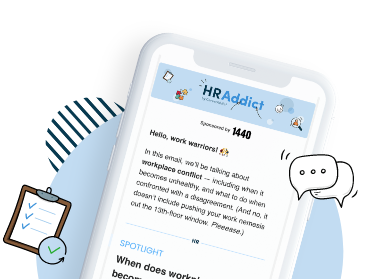While there are plenty of benefits of a remote workforce, the main challenge for companies is an inability to keep tabs on their remote employees’ progress and overall performance.
However, with the help of employee monitoring software, managers can easily address this issue. Companies can collect useful data about their employees, including their attendance, email communications, screen tracking and app usage during office hours.
For employers and managers, this is invaluable information, which can give them insight into their workers’ habits and processes and determine salary rates for their remote workforce. This is equally useful for remote employees, too, as they don’t have to worry about justifying their billable hours of work.
If you’re wondering how you can incorporate employee monitoring within your business in an ethical and considerable way, this article will clue you in on the best practices you should follow.
Here’s how you can make remote employee monitoring work for your company.
1. Be Transparent
The first rule of employee monitoring is: you talk about employee monitoring. By being upfront and honest with your remote employees and the reasons for introducing employee monitoring, you demonstrate good faith in them. Indeed, employees – even those who work remotely – require their supervisors’ trust.
Plus, by being transparent, you give everyone a fair opportunity to be accountable for their work habits, encouraging them to develop professionally. It’s also important that your employees fully understand how the software works and what data will be collected, as this helps them feel more at ease with this new practice.
A ‘big brother’ approach isn’t necessary, which could be considered a major privacy breach. Plus, being sneaky could potentially create a rift between you and your employees, affecting their productivity and motivation negatively. Also, when it comes to remote workers, they’ll be required to download the software themselves, so you’ll need to be honest.
Put simply, transparency is essential to keep your employee’s team spirit intact and to keep them engaged and focused.
2. Set Clear Policies
As mentioned previously, your employees should be familiar with the platform you will be using as well as the information that will be collected. To avoid any ugly misunderstandings, it would also be wise to draw up a thorough plan outlining the policies and regulations that need to be followed.
To begin with, this should include when and what is being monitored. If you’re tracking employees’ online chats, workplace channels or web searches, then your employees should be fully aware. You should also include what is out of bounds while they’re ‘on the clock’. This could include social media apps, among other things. All in all, your employees should be fully aware of what is and what isn’t acceptable behaviour.
You should focus on the management’s own restrictions regarding the tracking application. That way, your virtual team will feel that there are boundaries that need to be respected by both sides.
3. Make Sure it’s Legal
The biggest setback with worker monitoring is the potential legislative issues regarding privacy and data protection. To save yourself and your company from any trouble, then, you need to ensure that you’re staying within the legal boundaries of work monitoring within your country.
Once you have your policies thoroughly mapped out, make sure that you incorporate them in a legal contract. From there on, everything should be clearly outlined in writing and shared with and signed by your remote workers. This will create a safe passage through a potential legal minefield and will give ease of mind to both you and your remote employees.
4. Find the Right Software
There’s a wide range of employee monitoring platforms available, all with different tools and useful features. Some of the most important tools to look out for include time tracking, reports and data summarisation, web and app usage, break tracking, and screenshots.
It’s essential to pick the one that’s right for your company. Start by listing out your needs and objectives for monitoring your remote workers. From thereon, consider the features and services that each software offers and think about which ones would be the best fit for your remote team.
5. Consider the Technical Requirements
It’s safe to assume that most of your virtual team members will be using their own PCs and laptops for their work. If you plan to install the monitoring software on their personal devices, then you must consider any possible compatibility issues with the system you opt for. If some of your remote workers have Mac devices while others use Windows, for example, then this could complicate things, as different versions could offer fewer features depending on the programme.
A good way to simplify the process is to provide your remote employees with corporate computers. Plus, this would be much less intrusive, and it would ensure your workers’ privacy.
6. Allow Flexibility
While monitoring software can give you a better look into your employees’ work habits, it’s important to remain flexible. After all, everyone has their own working style – for some, this might mean taking a break to read a news article in between tasks, while for others it could mean playing a game of online chess. What might appear as a red flag could, in fact, be essential to their motivation and productivity.
Consequently, your approach to the data you will collect needs to be flexible. The best way to achieve this is to focus on the tasks at hand. Despite your team’s personal habits, as long as they work efficiently, don’t log false billable hours and get their tasks done on time, it shouldn’t really matter.
7. Make it a Company-Wide Policy
It’s important that your remote employees don’t feel like they’re being targeted. Making computer monitoring a company-wide policy, then, is essential. Of course, this also applies to management, too, as this will show your workforce, remote or otherwise, that everyone is treated equally.
While we’re on the subject, make sure your remote employees have the right to the same work standards as your in-office employees. A good example of this would be the break time they’re entitled to. If in-office employees can take hour-long breaks, then so should your remote employees. Be sure, then, to incorporate this within your remote monitoring policy.
8. Share the Results
Making the data you collect available to your remote employees, as well as the rest of your workforce, will reinforce further trust and give you more transparency.
Present this in a way that will help your employees track their habits, spot areas that need improvement and better their efficiency. Indeed, by giving them access to their data, this won’t only help them get a better idea of the system’s functions but also help with their individual performance.
9. Provide Feedback
Keeping an open channel of communication with your remote workers and offering them input on their work is important. With the help of a monitoring system, you can collect useful information that will help you tailor your feedback to each employee.
Indeed, by monitoring your remote employees, you will be able to observe and identify aspects of their processes that you would otherwise be unable to. This will enrich your overall understanding of each individual and make your feedback more specific and actionable.
10. Keep it Professional
It goes without saying that you need to keep within professional boundaries when tracking your remote employees’ computer activity. If your remote employees are using their personal computers for work, they will inevitably be also using the same devices for private matters too.
To avoid any privacy issues, or your employees feeling like they’re being spied on, you must reassure them that they will not be monitored during their personal time. This can be easily done by having the monitoring software stop working after the set office hours.
When used correctly, monitoring software can be greatly beneficial for you and your company, especially if you have remote workers. Not only will it help you stay updated on tasks and upcoming projects, but it will also allow you to evaluate everyone’s performance, including your own.
However, you need to maintain the delicate balance between tracking your remote workers’ activities and intruding upon their privacy. To turn this into an effective policy, then, you need to be completely transparent, set clear objectives and create an open channel of communication with your employees.
Does your company use monitoring software? Let us know in the comments section below!

